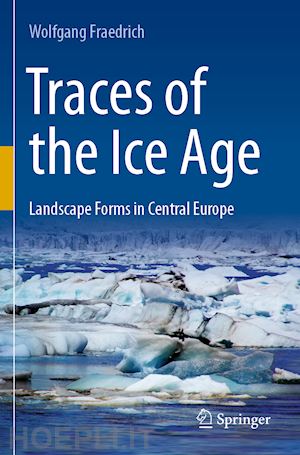

Questo prodotto usufruisce delle SPEDIZIONI GRATIS
selezionando l'opzione Corriere Veloce in fase di ordine.
Pagabile anche con Carta della cultura giovani e del merito, 18App Bonus Cultura e Carta del Docente
At present, we have been living in an ice age for around 2.5 million years, a geological epoch in which there is ice on Earth and in which the curve of the global mean temperature is subject to significant fluctuations (current trend: temperature increase). At nearly 16 million square kilometers, about ten percent of the land surface is currently covered by glacial ice-and glacial ice plays a major role in shaping landscapes. This compact textbook sharpens the eye for such landscapes. It makes the forms and the shaping processes comprehensible, which the author illustrates with numerous regional examples, especially from Central Europe, such as the North German Plain and the Alpine foothills, but also from Iceland. What traces have the glaciers and their meltwaters left behind? What formation processes can be inferred? How can recent climate history, in particular that of the Ice Age, be reconstructed?
It is exciting to look at current developments in glaciated areas and also to take a look at the (climate) future of the Earth. For example, the question arises as to what influence glaciers have on sea level and on future climate change. In this context, natural processes such as the ice age cycles, for which there are various ice age formation hypotheses, and anthropogenic influences in global warming must be weighed against each other.
Searching for traces on our doorstep.- All around the glacier.- Distribution of ice and cold regions.- Glaciations during the geological past.- Glaciers shape landscapes.- The influence of glacial meltwater.- Shaping shapes away from glaciated areas.- Glaciers and sea level.- The next cold period is sure to come.
Wolfgang Fraedrich teaches geology, geography and media technology education at a Hamburg secondary school. He is the author of numerous textbooks and non-fiction books and has been co-editor of the journal geographie heute for several decades, with well over 200 publications in the specialist journal sector alone.
Through numerous excursions with adults and various research trips with school groups as part of the supervision at Jugend forscht, he has become acquainted with the most diverse corners of the earth. In addition to volcanism and the formation of mountain landscapes, glacial regions play a particularly important role.











Il sito utilizza cookie ed altri strumenti di tracciamento che raccolgono informazioni dal dispositivo dell’utente. Oltre ai cookie tecnici ed analitici aggregati, strettamente necessari per il funzionamento di questo sito web, previo consenso dell’utente possono essere installati cookie di profilazione e marketing e cookie dei social media. Cliccando su “Accetto tutti i cookie” saranno attivate tutte le categorie di cookie. Per accettare solo deterninate categorie di cookie, cliccare invece su “Impostazioni cookie”. Chiudendo il banner o continuando a navigare saranno installati solo cookie tecnici. Per maggiori dettagli, consultare la Cookie Policy.